Adobe has been doing a lot of work over the past year and a half, integrating generative AI functionality inside their tools, with things like Generative Fill in Photoshop, Generative Remove in Lightroom and Generative Extend in Premiere Pro. However, the world of AI is much larger than just Generative AI and video/image generation. Specifically, agentic AI and more general-purpose AI with MCP (such as Claude / ChatGPT) provide a much larger opportunity to help creatives across their entire workflow.
One of the advantages of working on the community team at Adobe is I get to help solve real world problems for super creative people (inside and outside Adobe). Chatting with my team this week, we had a discussion about how big of a hassle it is managing and searching screenshots. I thought this might be a fun project to tackle over the weekend.
My first thought was to just throw the image and the search at AI and have it give me the results, but that would be slow, and would not work at all if you are searching lots of screenshots. Thinking about it, what I really wanted to do is to embed a little LLM directly into the PNG, and have it tell me about itself when I need the info (things such as content, text, description, etc…).
As I expect most people in the tech industry have been doing, I’ve been spending a lot of time lately thinking about AI and its impact. As I work with the community for Adobe, I’ve specifically been thinking about how it will affect the creative industry, and its implications for Adobe and Adobe’s creative tools.
Adobe makes industry leading creative tools such as Photoshop, Illustrator and Premiere Pro, and I have been curious about exploring how / if these tools fit in within an AI first world. While I definitely have some thoughts on that (I’ll save that for another post), I wanted to start with the basics and explore how and if Adobe tools could be integrated with AI tools. Questions like:
Since I was in college, I have been an avid reader of The Economist. I read (and listen) to it cover to cover every week, and essentially have a set schedule for it through the week to ensure I get through it, and keep time for additional reading.
However, over the past couple of years, The Economist has made it more and more difficult to consume the content in a flexible manner. Examples include an increasingly poor reading and user experience when accessing The Economist digitally through its app, removing access to its RSS feeds making it difficult to listen to The Economist through podcasting apps, and deprioritizing physical delivery (my physical copy now arrives two days later than it did a couple of years ago) forcing users to spend more time consuming the content digitally.
DARCI is a self hosted platform for aggregating, viewing and analyzing Destiny 2 PVP stats. Released as an open source project in 2023, it is available for download from the DARCI Github project page.
DARCI provides similar functionality to Ascendant, but where as Ascendant focuses on deep data views of a single player, DARCI can track and compare multiple players (perfect for friends or a clan.)
Ascendant is a MacOS desktop application for collecting and analyzing your Destiny 2 PVP stats. Originally released in 2023 it is available for download at ascendantapp.info.

The application provides what is probably the most comprehensive view, breaks downs and analysis of individual player data available in the Destiny 2 community.
Features Include:
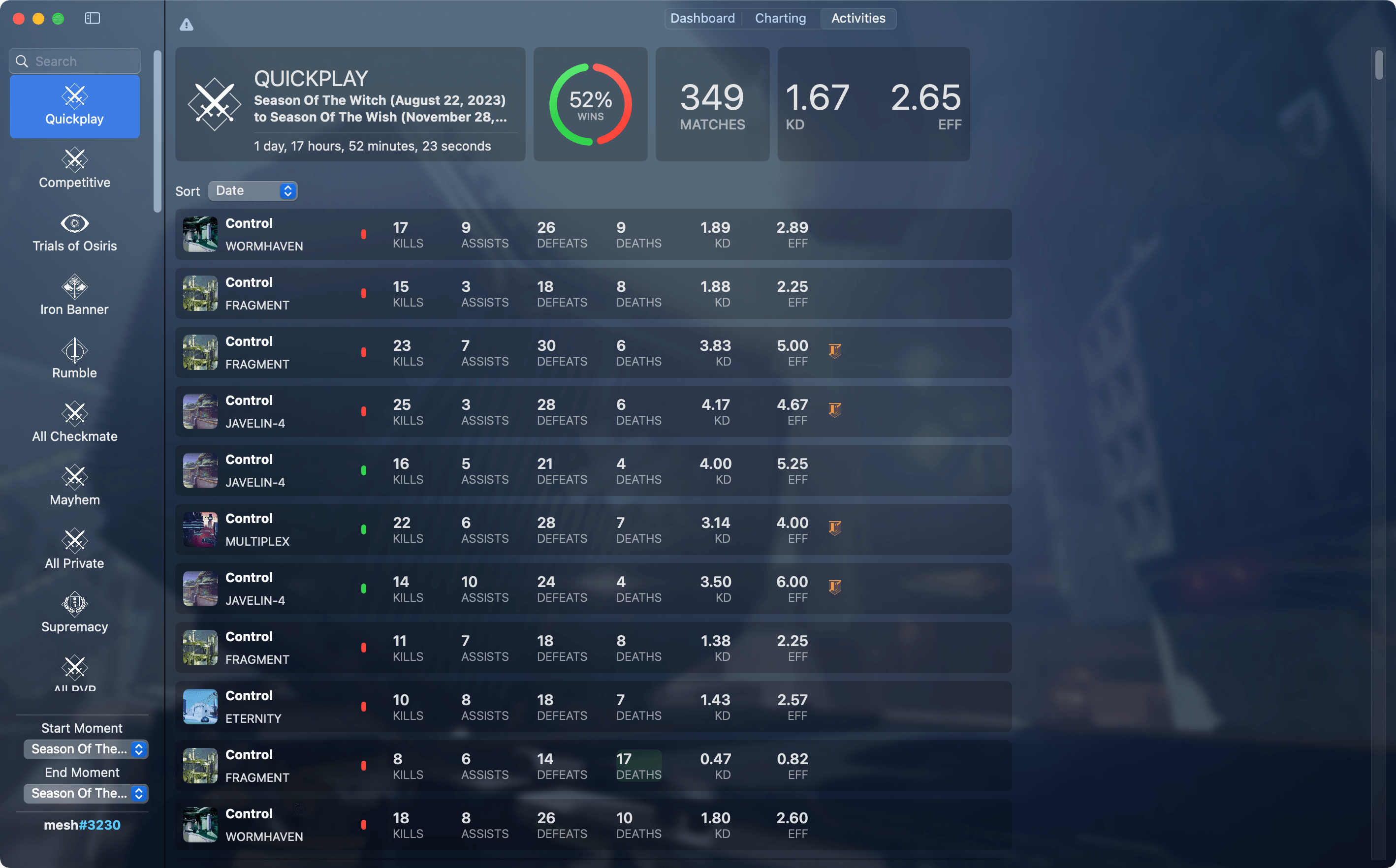
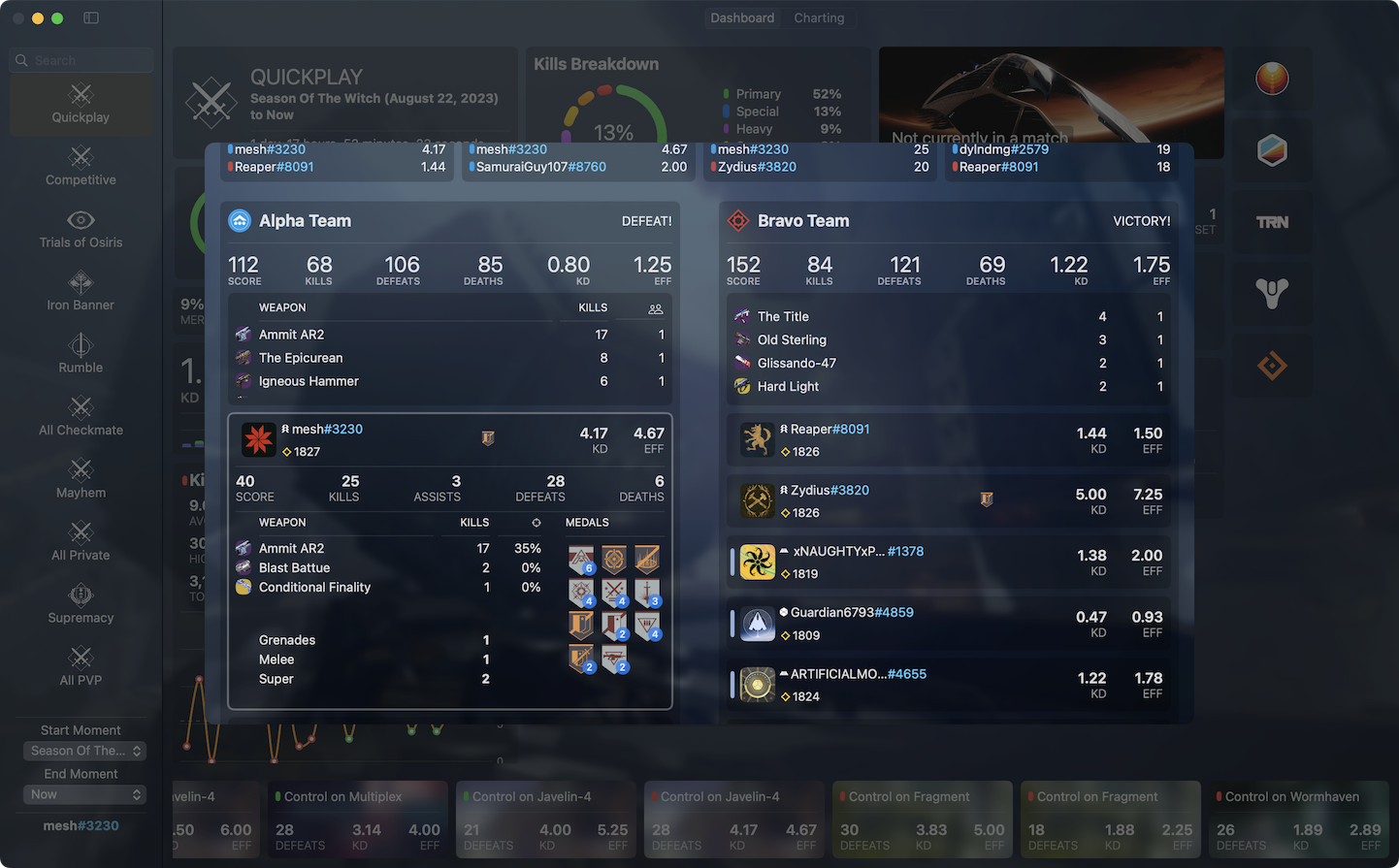
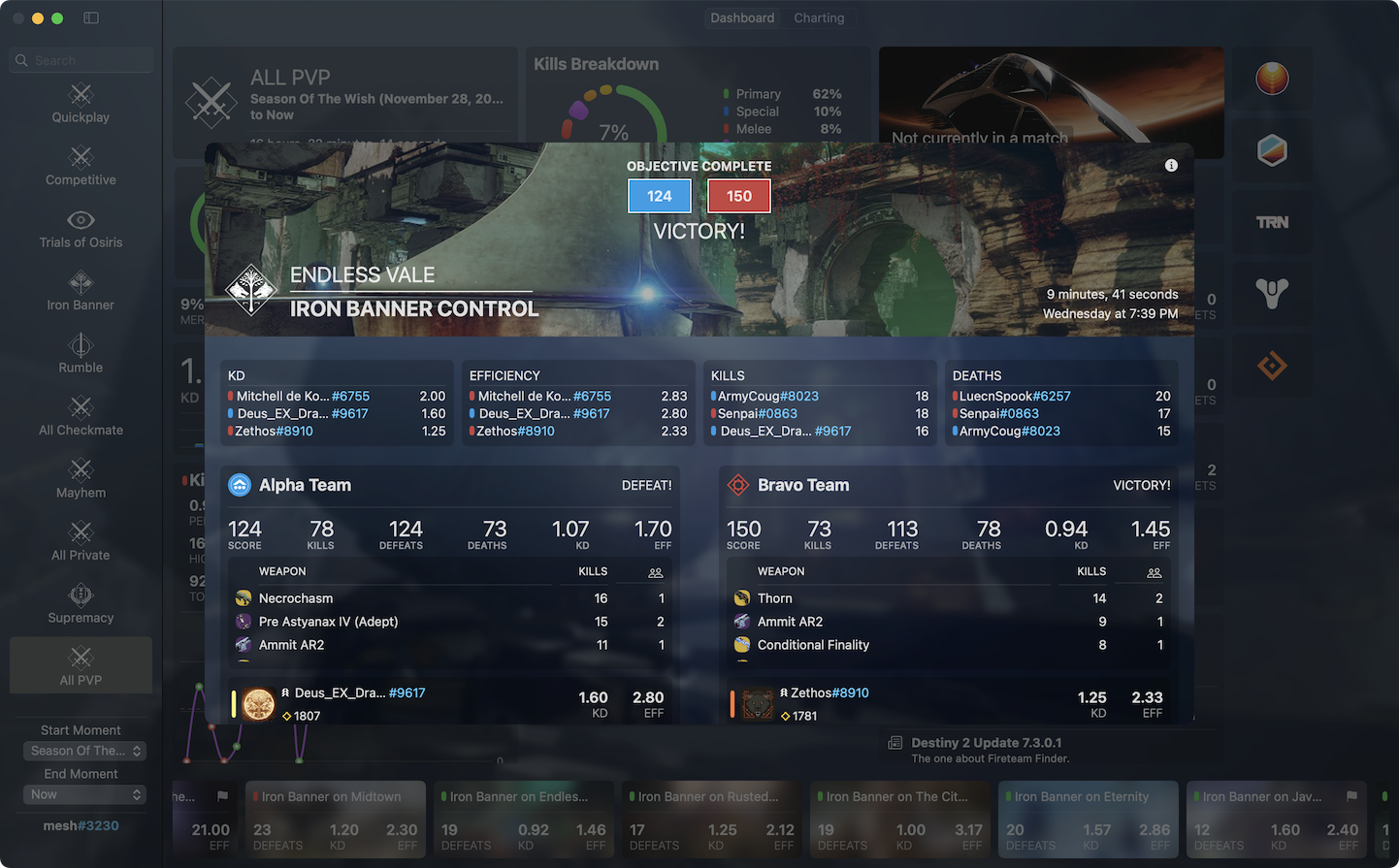
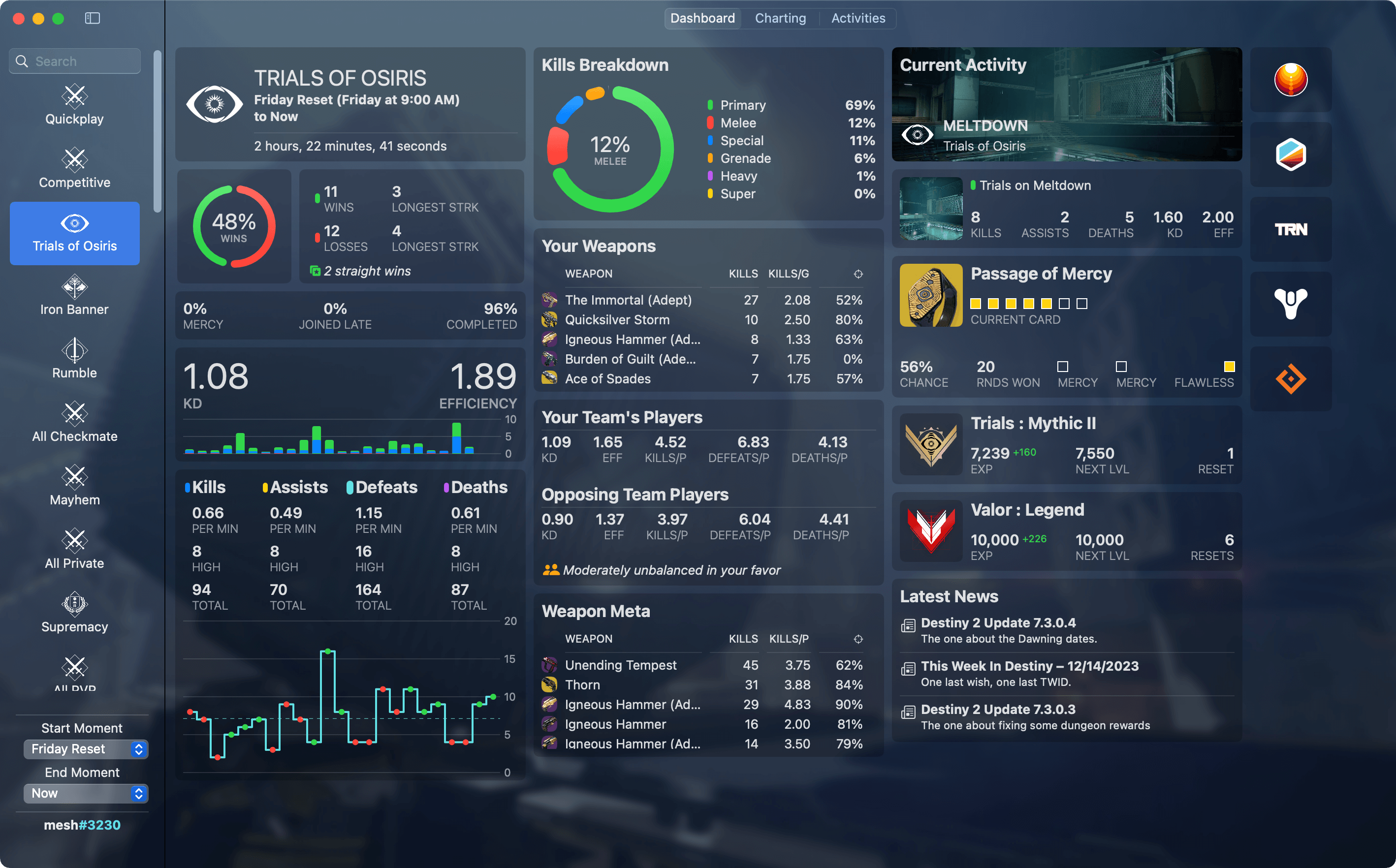
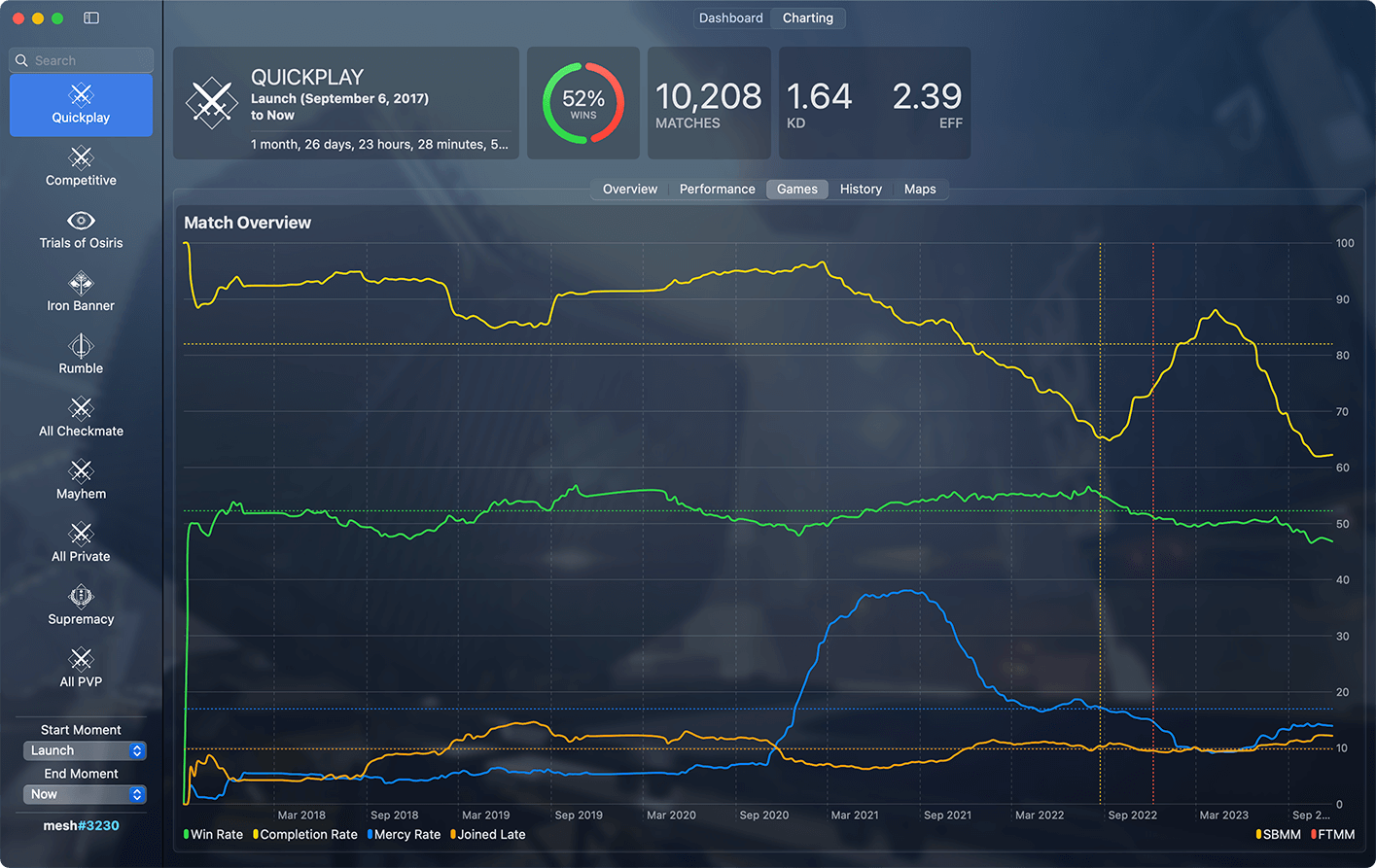
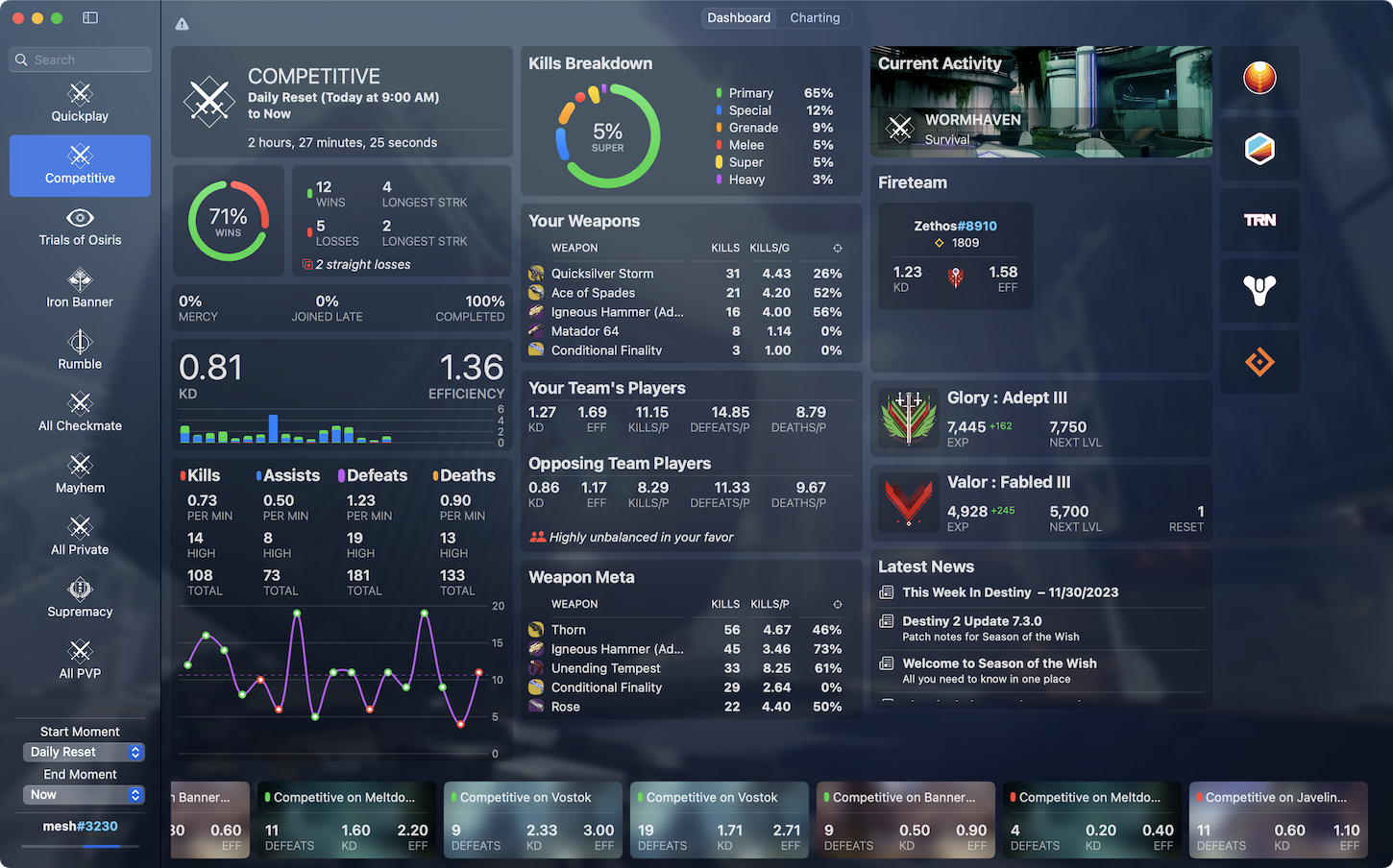
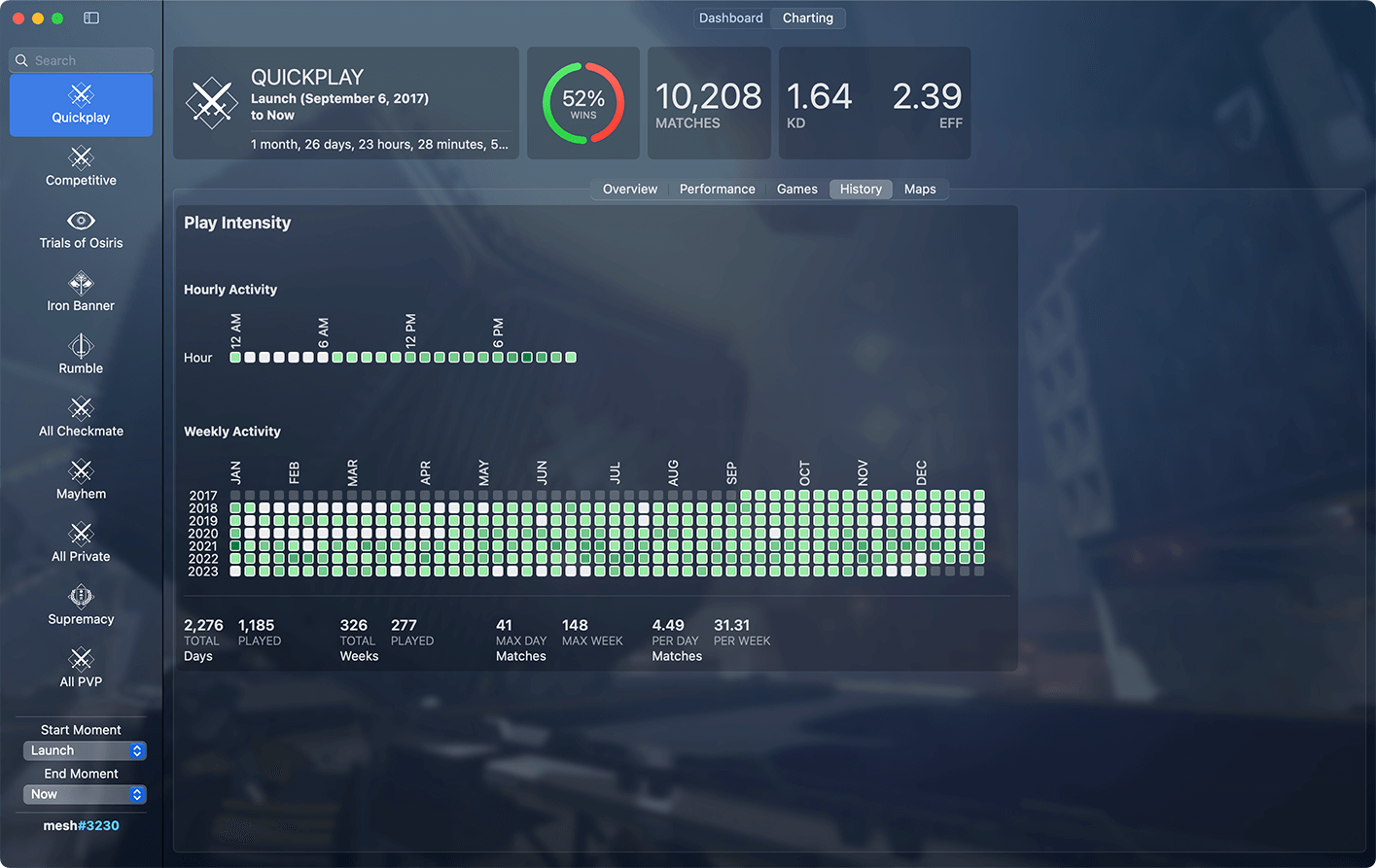
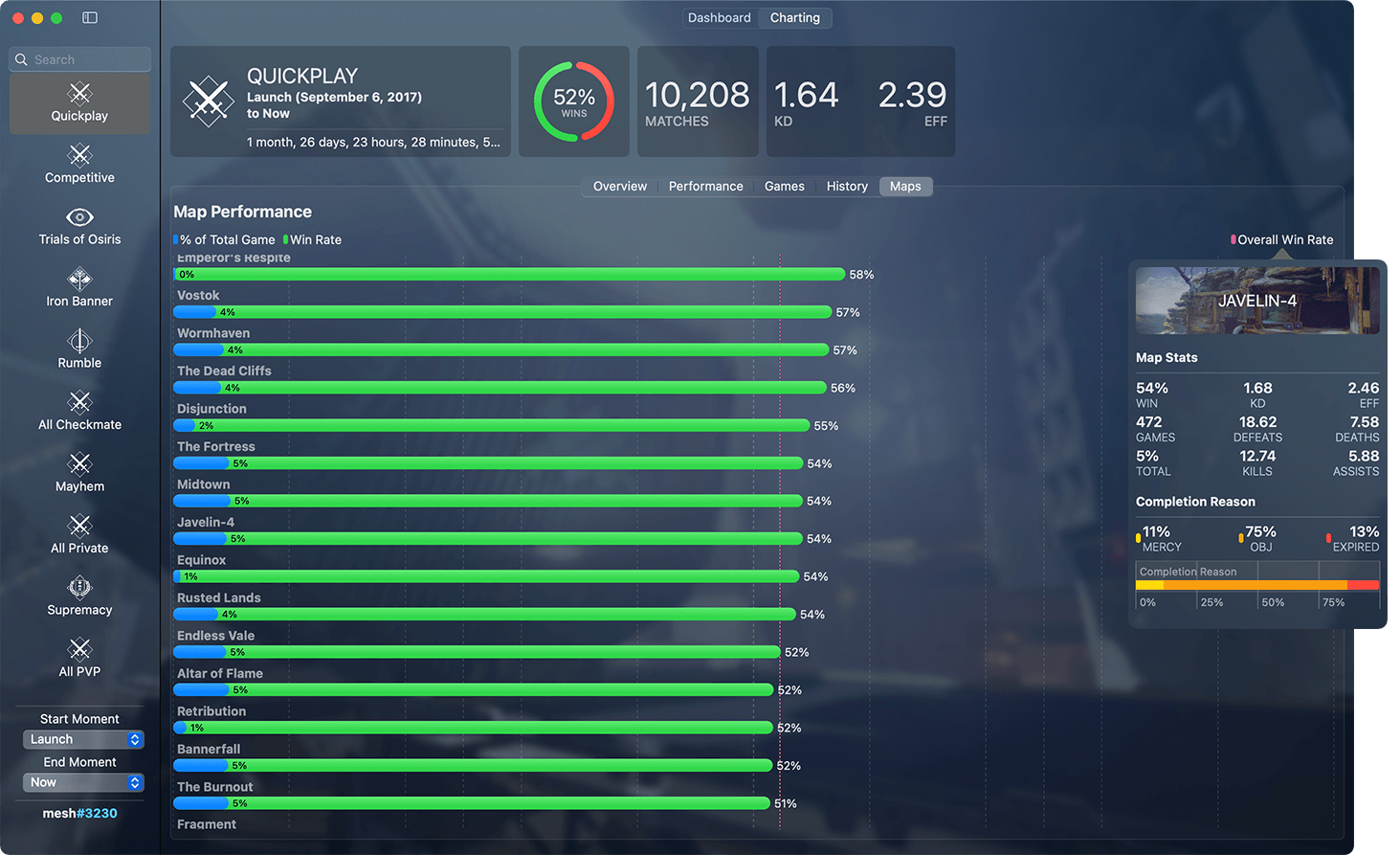
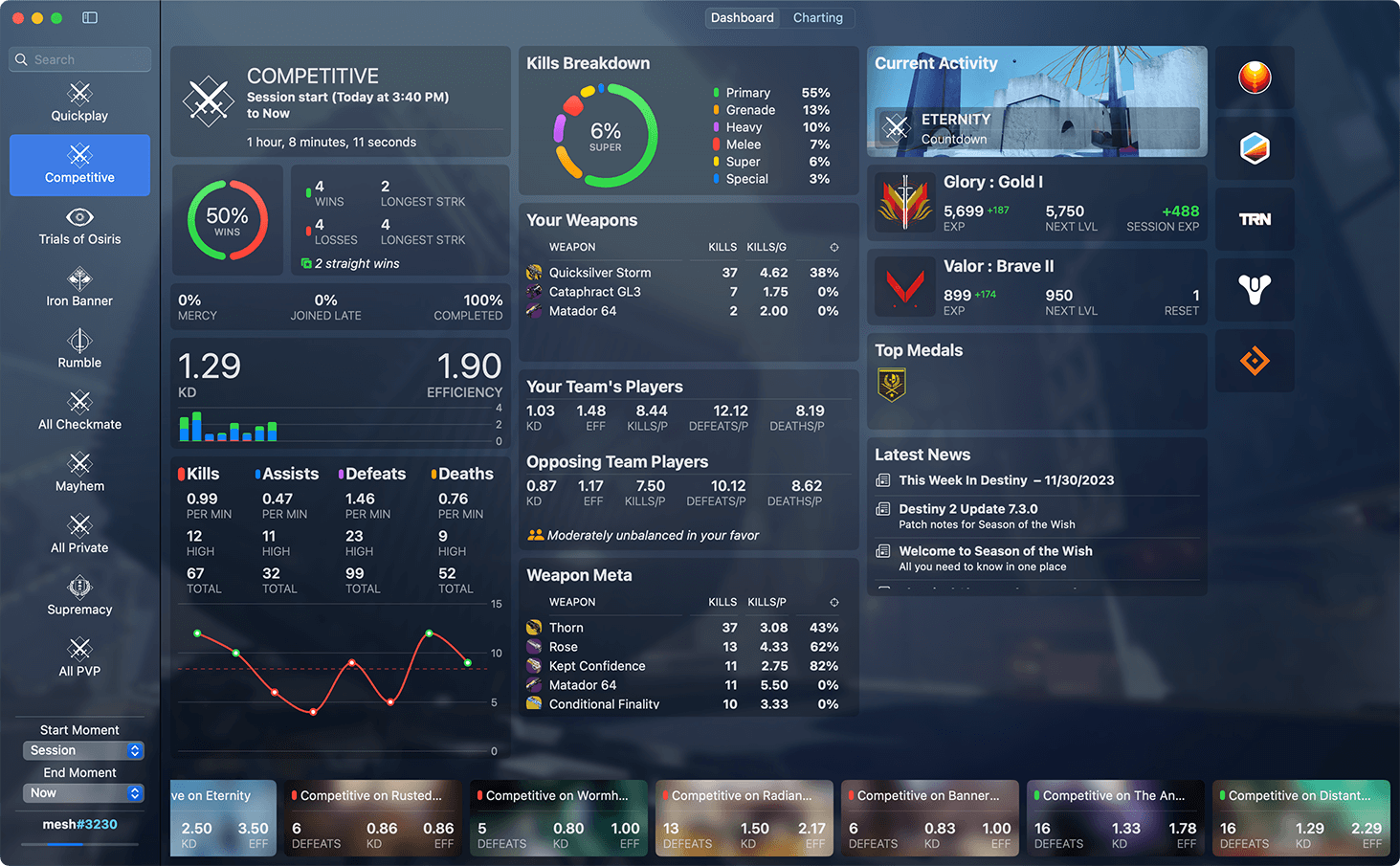
You can find more information including an FAQ, as well as download the app at:
DCLI (Destiny Command Line Interface) is a suite of command line tools for syncing and analyzing Destiny 2 PVP data. Originally released in 2001, it is written in RUST, and available for Mac, Windows and Linux.
The code for the project is released under an MIT License. The latest release, as well as code is available on the DCLI Github project page.
The core of the suite is built around dclisync which syncs all Destiny 2 PVP data for the specified player. This data is saved in a SQLite3 database, which can then be used as the data source for other projects. It supports syncing data for multiple players
The WoW TCG Utility is a native Mac OS X application for searching and managing cards for the World of Warcraft Trading Card game. This was an app I worked on from 2009 to 2010, and released as a free, open source project (released under an MIT License).
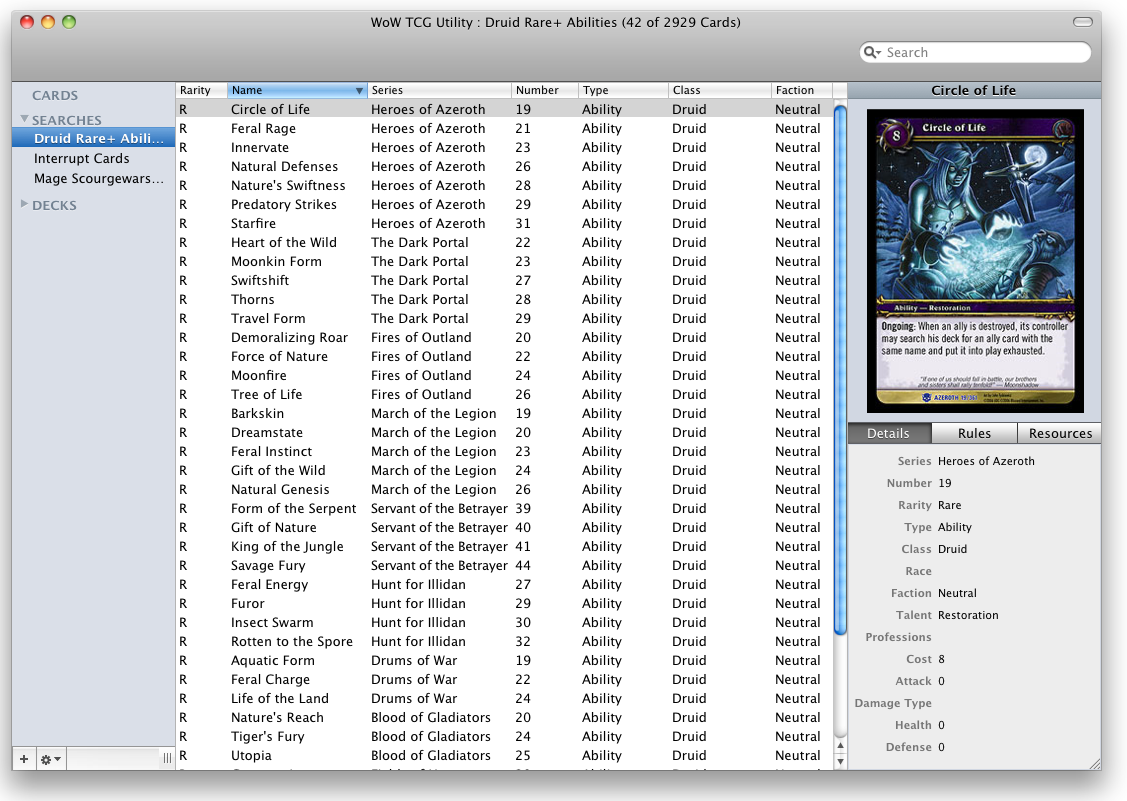
You can view the project page as well as download and view all of the code from the WoW TCG Utility Github Page.
Grant Skinner and I have released a new iOS and Android app for Destiny 2. Redrix is a Destiny 2 PVP companion app which gives you information and stats when playing Crucible mode in Destiny 2.
The response from the community has been overwhelming. The app made the front page of Reddit (2), and has had a couple of articles and reviews posted online.
We are using Bungie’s Destiny 2 API, which really gives a ton of information about what is going on in game. I honestly think its one of the best ways a company can support and build a community, and Bungie has really knocked it out of the park.
I have ported my Twitch Live browser extension for Google Chrome to Firefox. Twitch Live is a toolbar extension that makes it easy to see when your favorite streamers on Twitch are live.

There are options to open streams in a new window or tab, to enable notifications, as well as filter out vod casts / reruns.
You can install the extension from the Firefox Add-Ons site. If you have any issues, just ping me at @mesh on twitter.